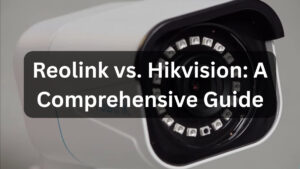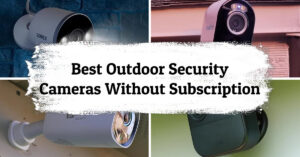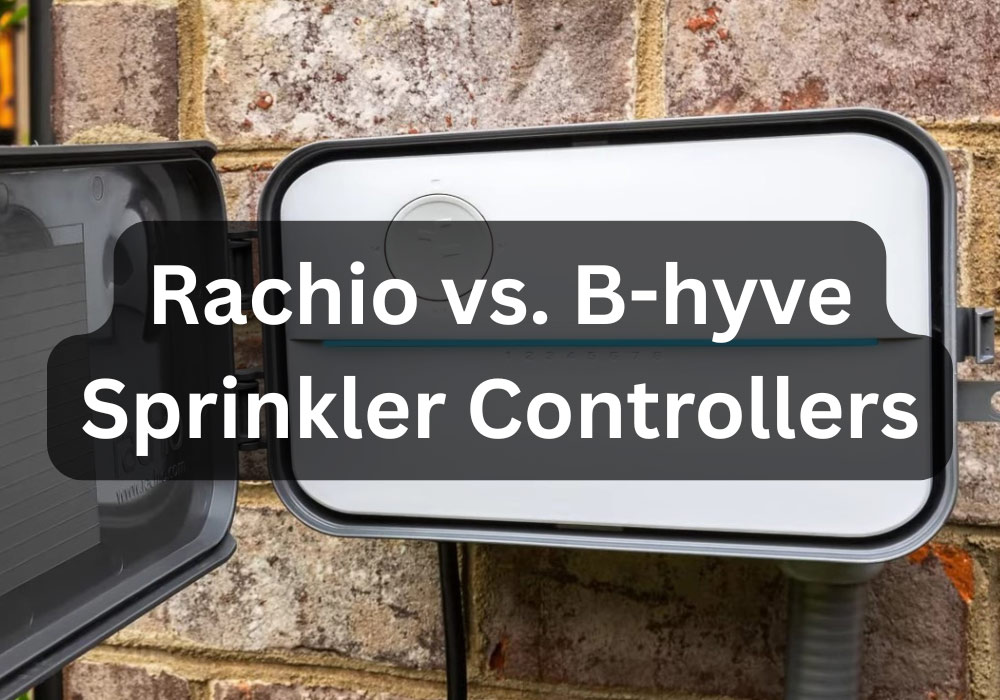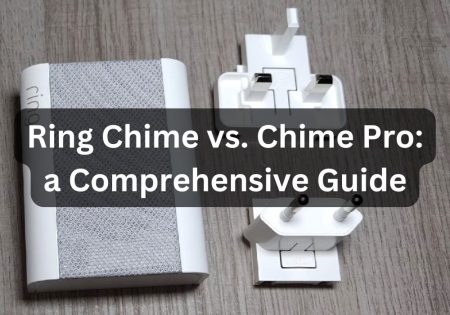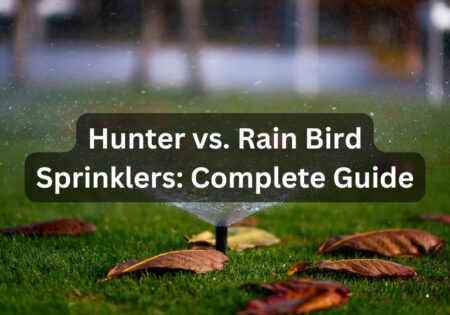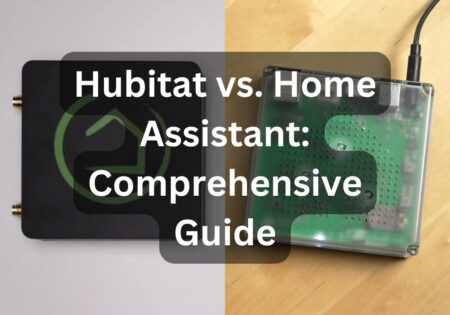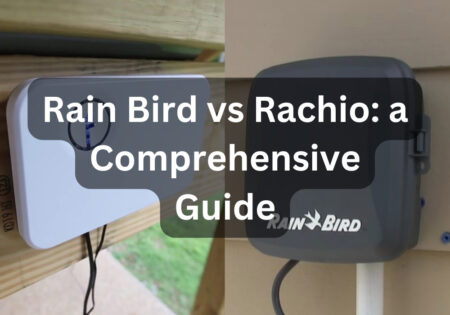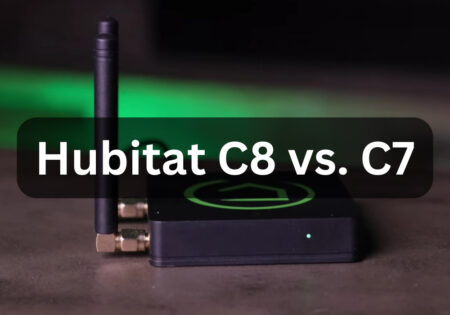Here’s your complete Rachio vs. B-hyve guide! I’ve tested both smart sprinkler controllers in all kinds of conditions, from Arizona drought zones to humid southern lawns. I’ll compare them across the board to help you decide which one’s the best fit for your irrigation system.
Rachio or B-hyve, Which is Better? (Quick Answer!)
| Feature/Criteria | Rachio | B-hyve | Winner |
|---|---|---|---|
| Installation Ease | Tool-free wiring, app-guided setup | Screwdriver needed, less intuitive app setup | Rachio |
| Outdoor Readiness | Needs extra case & power adapter | Outdoor-ready out of the box | B-hyve |
| App Design | Clean, intuitive, modern | Clunky, settings are buried | Rachio |
| Zone Configuration Options | Very detailed (soil, slope, sun, nozzle) | Basic options, limited precision | Rachio |
| Smart Scheduling (Flexibility) | Powerful with Flex Daily + ET integration | More rigid, but supports custom “every X days” setup | Tie |
| Weather Intelligence | Hyperlocal, personal weather station support | Public station use, less accurate | Rachio |
| Manual Control (Controller Buttons) | Limited — mainly for zone testing | Full control via dial and screen | B-hyve |
| Voice Assistant Integration | Alexa, Google, HomeKit, SmartThings, IFTTT | Alexa, Google only | Rachio |
| Reliability (App & Updates) | Very reliable over time | Occasional glitches and one-off failures | Rachio |
| Cloud Independence | Relies on cloud/app | Can operate fully offline | B-hyve |
| Long-Term Use If Company Fails | Limited local control, risky | Still fully usable with built-in programming | B-hyve |
| Price (Base Model) | $200–$250 + accessories | $120–$160 all-in | B-hyve |
| Overall Smart Home Integration | Broad ecosystem compatibility | Very limited | Rachio |
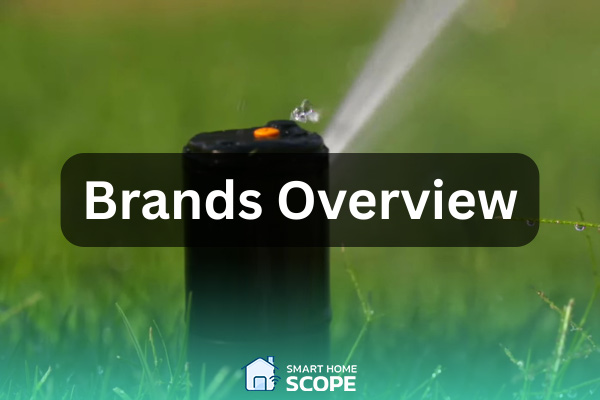
Rachio vs. B-hyve: Quick Overview of Both Brands
Before comparing Rachio vs. B-hyve, let’s take a look at both competitors as a brand. At first glance, Rachio and B-hyve smart irrigation systems may seem similar. Still, they have some significant differences when you take a closer look.
Rachio feels more like a modern, upscale product. It’s all about the app and remote control. Models like the Rachio 3 come with Weather Intelligence™ Plus technology, accurate local weather data, and compatibility with smart home systems like Apple HomeKit, SmartThings, and Alexa.
The system is designed for people who like to control everything from their phone, fast, wireless, and completely cloud-based.
B-hyve by Orbit is more for those who value traditional, reliable functionality. Its app design may not be the most modern, but its strength is that you can control the system manually, even if the internet or app goes down.
The B-hyve XR model also has features like mesh Wi-Fi support and better weather response at a more affordable price than its competitors.
Comparing them is like comparing a Tesla to a beefy Ford pickup truck; they both get you where you need to go, but they’re designed for different users.

B-hyve vs. Rachio: Setup and Installation Experience
As someone who’s installed both systems multiple times, the setup experience can make or break your first impression. Here’s what I learned.
Rachio Installation Steps
The Rachio installation shows right from the start that we are dealing with a modern and user-friendly product, especially for people interested in technology. When you open the box, everything is neat and simple. The wiring terminals are push-in, meaning no screwdrivers are needed; push the wire in, and you are done.
The Rachio app is designed using the same approach. It walks you through the installation process in pictures, with tips and short videos. Everything is easy to understand and navigate, from connecting to Wi-Fi to naming zones and determining soil type, slope, and sunlight.
One feature that I liked was the ability to take a photo of each watering zone; that way, you know exactly which part of the yard you are adjusting later.
The only part that was a bit of a hassle was installing the device outdoors. To do this, you must purchase a separate waterproof box and an outdoor adapter. It’s not complicated, but you should consider it in your financial and time planning because the device does not provide these items.
Rachio offers one of the easiest installation processes with its controllers, even compared to other brands like Rain Bird, you can read my Rachio vs. Rain Bird guide for more information.
B-hyve Installation Steps
In contrast, B-hyve feels more like a traditional device, but that’s not necessarily bad. Its wiring terminals are designed with screws, and Orbit even includes a small screwdriver in the box. One notable advantage is that it comes pre-packaged in a waterproof case, so you don’t have to search for a separate case or weatherproof adapter.
B-hyve’s main weakness, however, is its software. The app works, but its interface is more clunky than Rachio’s. Finding zone-specific or more detailed settings can be time-consuming and confusing, as the menus are cluttered.
However, the controller has more physical buttons and a classic, clear rotary interface. This means that even if the app crashes or Orbit’s servers go down, you can still manually and locally control your irrigation system from the device, a massive plus for those who value reliable, internet-free operation.
Rachio wins for app-driven ease, but B-hyve scores points for built-in manual fallback and outdoor readiness. Depending on whether you prioritize sleek software or rugged independence, your choice might already be shaping up here.
Rachio seduces with algorithmic elegance, while B-hyve stands its ground with tactile grit and weatherworn resolve. It’s less a choice—more a philosophy: cloud-born precision or stoic self-sufficiency.
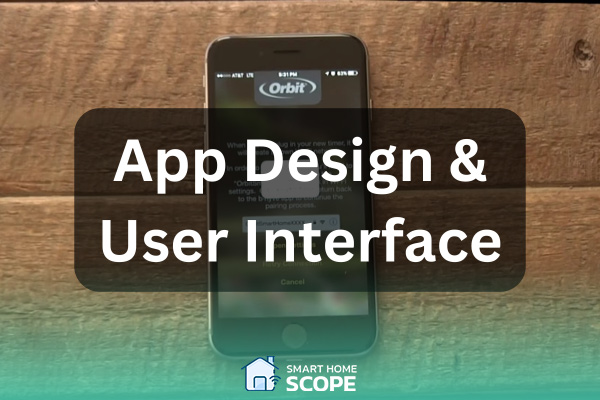
Rachio vs. B-hyve: App Design and User Interface
It’s time to compare Rachio vs. B-hyve in terms of app design and user interface. When it comes to smart sprinkler controllers, the app is your command center. This is where you’ll tweak settings, monitor watering, and fine-tune schedules. Trust me; the experience between Rachio and B-hyve is night and day.
Rachio App Walkthrough
The Rachio app is like getting into a luxury car; the design is sleek and simple, and everything is right where it should be. Everything is logical and easy to access, from scheduling watering to selecting specific days.
The app walks you through the setup process with images and instructions for adjusting soil, sunlight, and nozzle type so you don’t feel like you’re fiddling with a complicated system.
One of its standout features is “Flex Daily,” a program that automatically adjusts based on weather forecasts, evaporation, and soil moisture. It feels like you have a personal weather station + irrigation expert in your pocket. You can connect public or personal weather stations to it for even more accurate forecasts.
Switching between zones, programs, and manual mode is smooth, and notifications are timely. For example, the watering start warning saved me from embarrassment at a backyard party several times!
B-hyve App Walkthrough
The B-hyve app is designed more like a utility than a fancy piece of software. The app has all the basic features, like defining watering zones, setting up smart watering (if enabled), and manually running irrigation.
Still, app’s features aren’t always easy to access. The menu structure is sometimes complicated, and you have to go through a few extra steps to do some simple things, like changing the watering time for a zone, for example.
Instead of entering the exact time directly, you can sometimes only change it with percentages and sliders, which doesn’t make for a smooth user experience.
However, B-hyve has one feature that many people value: internet-independent hardware control. This means that even if the internet or the app’s servers go down, the device allows you to set or run irrigation directly with its buttons and display. This feature is especially valuable for those who don’t want to rely on the app or are in areas with poor connectivity.
In terms of notifications, B-hyve does provide them. Still, they’re not as accurate or predictable as more expensive competitors like Rachio. For example, it usually only sends notifications after watering is finished.
Overall, if you’re looking for a smart home system that can be controlled offline and doesn’t care much about the app’s look, B-hyve is a solid choice, though it doesn’t have much to say about the user interface design.
In conclusion, Rachio has a better user-friendly app design and smart features, while B-hyve wins for basic control and hardware fallback.
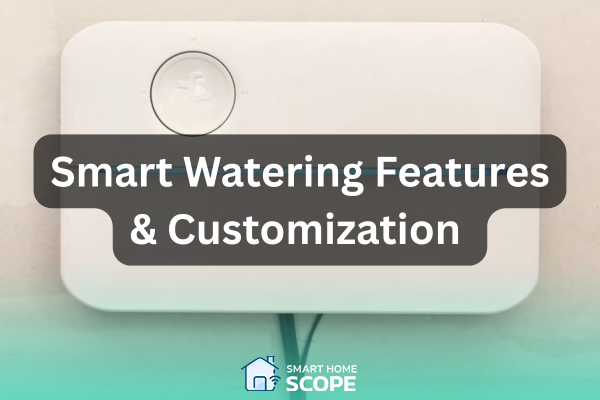
Bhyve vs. Rachio: Smart Watering Features and Customization
Let’s be realistic; most of us use irrigation controllers for their smart features, not just to replace a timer. The goal is for the device to know when to water and when to stop, and to save water. Rachio and B-hyve do a good job in this regard, but each takes a different approach.
Zone Configuration and Scheduling
Setting up each zone on Rachiois like fine-tuning a complex system. You enter information like the type of plant (cool or warm grass, shrubs, etc.), soil type (clay, sandy, loam), slope, sunlight, and nozzle type, and it even takes root depth into account. This data helps the device calculate the plant’s exact water needs and optimize water usage.
The Rachio Flex Daily app is very smart. It adjusts watering schedules based on weather conditions, soil moisture, and future forecasts and automatically stops watering during heavy rain or high humidity periods. Of course, you can set fixed schedules, but its smart functionality is truly impressive.
B-hyve, on the other hand, also has smart watering capabilities. Still, the precise settings for each zone are less available, and you usually have to specify watering times by percentage. Some settings are also hard to find in the menus.
However, B-hyve allows setting an irrigation schedule with specific time intervals, such as every 14 days, which is helpful for particular seasons like spring and fall.
Seasonal Adjustments and Weather Integrations
Both systems use weather data, but they use it differently. Rachio uses highly accurate local forecasts (especially if you upgrade to Weather Intelligence™ Plus). It combines information like evapotranspiration and current precipitation to adjust or stop watering schedules completely. You can connect it to personal weather stations for even more accurate data.
B-hyvecan also skip watering in the event of rain, frost, or wind, but the settings for the weather station are hidden in the app, and you have to dig through menus. Also, B-hyve’s seasonal adjustment system focuses on changing the watering frequency throughout the year.
At the same time, Rachio prefers to adjust the duration of watering. For example, it might increase the duration of watering in the summer. Still, B-hyvewill increase the frequency and keep the duration of each watering short.
Also, only Rachio allows you to enable or disable the cycle-and-soak feature (staged watering to prevent runoff), while the B-hyveautomatically applies this feature when Smart Watering is enabled, and there is no manual control.
To sum up, Rachio offers professional performance with high precision and fully customizable settings. In contrast, B-hyvefocuses more on practicality, and the flexibility in scheduling makes it a good option, especially for those who need watering at specific and recurring intervals.
Rachio orchestrates irrigation with artisan exactitude and granular finesse, while B-hyve thrives on pragmatic cadence; watering in loyal, metronomic devotion.

Smart Home Integrations and Voice Control
If you’re like me, once you start building a smart home, you want everything to connect, from lights to thermostats to sprinklers. That’s where integrations come into play.
Rachio’s Smart Home Integrations
When it comes to smart home integration, Rachio is unmatched. It integrates seamlessly with Amazon Alexa, Google Assistant, SmartThings, and even Apple HomeKit, making it a great option for those active in the Apple ecosystem. For example, you can issue voice commands like: “Alexa, tell Rachio to water Zone 2 for five minutes.”
You can also connect Rachio to smart routines. If you have a motion sensor in your yard, for example, you can set it to temporarily pause watering when you walk your dog or have a party in the yard. You can even use IFTTT (If This Then That) to define specific scenarios; for example, if the air quality index rises due to a fire, the watering schedule will be postponed.
B-hyve’s Smart Home Integrations
B-hyvealso supports Alexa and Google Assistant, but that’s about it. There’s no HomeKit, SmartThings, or open API for more advanced settings.
Voice commands work, but they’re a bit clunky in practice. I often prefer to control directly through the app because it’s faster and easier. However, these features are also helpful if you’re looking for hands-free control or a little show-off to the neighbors.
The Practical Takeaway
If smart home integration is important, Rachio is a definite choice. It’s compatible with many smart services and allows for creative automation.
But, if you’re looking for a standalone controller with basic features, B-hyvecan get you started without getting into the complexities of the smart home.

B-hyve vs. Rachio: Hardware Design and Outdoor Use
Let’s talk about hardware. No matter how fancy the app is, the controller sitting on your garage wall or backyard post matters, too.
Rachio’s Hardware Build
The Rachio’s hardware design is modern and simple. Its minimalist white exterior with a small LED light gives it a sleek, bright feel.
One caveat, though, is that it’s not waterproof by default. If you plan to mount it outdoors, purchase a weatherproof case and an outdoor adapter separately.
In my experience, this wasn’t a big deal, but it’s a hidden cost many people initially don’t realize. It looks nice and doesn’t take up much space indoors, but outdoors, it requires some preparation and additional equipment.
The device’s physical buttons are also very limited and only used for testing areas, so you’ll have virtually no access without the app.
B-hyve’s Hardware Build
B-hyve, however, is fully prepared for the outdoors. Its rugged, waterproof body looks and feels like it came from the professional Orbit brand.
The buttons, display, and dial on the body give you full control of the system even without the app. This feature comes in handy when the Wi-Fi or the server goes down.
I liked the clear manual controls; I could easily hand the system over to someone unfamiliar with the app, like a temporary housekeeper, and be confident it would water. They even include installation tools and a small screwdriver in the box, showing attention to detail.
What Matters to You?
Rachio is aesthetically superior if you’re interested in sleek design and full app functionality. But if you’re looking for outdoor durability and app-independent control, B-hyveis a more reliable option.
Long-Term Performance and Reliability
When you invest in a smart sprinkler controller, you’re not just buying a gadget; you’re buying peace of mind. That’s why long-term reliability is an important factor in this Rachio vs. B-hyve comparison.
My Experience with Rachio
I’ve been using Rachio for a few years, and it’s been great so far. The Wi-Fi connection has always been stable, the app is regularly updated, and the hardware has never had any issues.
One of Rachio’s strengths in the long run is the stability of its cloud services. Since most of its smart features run on its servers, there’s a lot of reliance on that infrastructure, which, thankfully, the brand has proven reliable and growing well.
I worry that if Rachio ever folded, the minimal physical controls on the unit mean you’d likely lose almost all smart features. Without the app, you can only start or stop zones manually, with no real scheduling.
My Experience with B-hyve
B-hyve also performed well in everyday use. Still, I did encounter one glitch during testing: the controller once malfunctioned, and I had to do a hard reset. Unfortunately, some custom programs were removed, but thankfully, the basic timing and zone settings remained. It reminded me that no system is entirely flawless.
A big plus of B-hyve is its low reliance on the internet or cloud servers. Even if Orbit’s servers go down or the app crashes, you can still set up and run everything from the physical controller.
For those looking for a system that will survive any situation, even if the company behind it goes out of business, B-hyve feels more secure.
Which One Wins on Reliability?
If you rely on cloud services and want advanced features and regular updates, Rachio is a solid choice. But if you prefer a device not tied to the internet and can be used in any situation, B-hyve is a more durable option. Both can last for years, depending on your ” reliability ” preference.
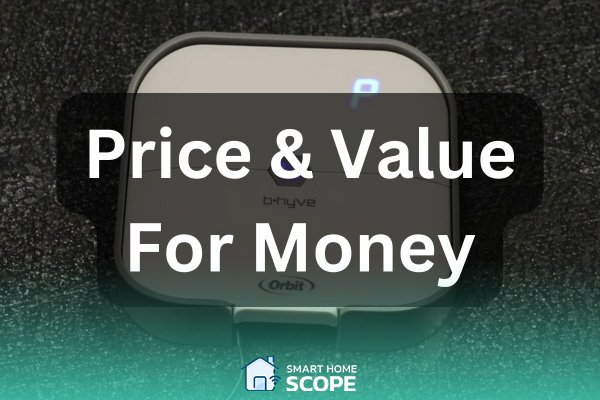
Price and Value Comparison
When comparing B-hyve vs. Rachio, it’s always important to consider value for money. Let’s talk about price because no matter how cool a smart sprinkler controller is, cost plays a huge role in deciding which one ends up in your cart.
Rachio’s Price and What You Get
Rachio has positioned itself as the luxury option in smart irrigation. The Rachio 3 typically costs between $200 and $250, depending on the number of zones (8- or 16-zone models) and seasonal discounts. Of course, you’ll also need to factor in additional costs, such as Waterproof housing for outdoor installation (around $20-$30).
If you want a complete system suitable for outdoor use, you should expect to pay around $250-$300. For that price, you get an accurate and user-friendly app, advanced weather features (especially with the Weather Intelligence™ Plus upgrade), extensive integration with smart homes (like Alexa, Google, SmartThings, and even HomeKit), and a sleek, modern design that’s easy to set up and hassle-free.
B-hyve’s Price and What You Get
On the other hand, B-hyve is a more economical choice. The B-hyve XR model typically sells for between $120 and $160. Unlike Rachio, it comes ready for outdoor installation right out of the box, meaning you don’t need to buy a separate enclosure or adapter, which saves you money on the result.
At this price point, you still get some nice features: smart watering, rain-sensing, and voice control via Alexa or Google. Of course, you’ll have to put up with a simpler app design and the lack of integrations like HomeKit or SmartThings.
Which Delivers Better Value?
In my opinion:
- If you’re a techie and enjoy advanced interfaces and smart features, Rachio is worth the extra cost.
- But if you’re looking for the best value for money, reliable local control, and a budget-friendly yet durable device, B-hyve is a great choice.
It’s like comparing an iPhone Pro to a well-made Android phone; they both run the show, but they’re built for different tastes.
Final Verdict: Which One Is Right for You?
Now that we’ve compared Rachio vs. B-hyve side by side in every criteria, let’s see which one’s a better fit for you. After testing Rachio and B-hyve, I can say there’s no one-size-fits-all winner here. It all depends on what you value most.
Choose Rachio if
If you’re looking for a smart irrigation system with a modern design, a smooth app, and a professional user experience, Rachio is the right choice.
It integrates seamlessly with smart home ecosystems like Apple HomeKit, SmartThings, Alexa, and Google Assistant. Plus, If offers advanced scheduling, accurate weather data, and automation capabilities.
If you’re the type of user who likes to make precise adjustments, enjoys new technology, and doesn’t mind paying a little more for advanced features, Rachio is exactly what you’re looking for. Rachio is the Tesla of the smart irrigation world; powerful, advanced, and always ready for the future.
Choose B-hyve if
On the other hand, if you’re looking for a device that can be installed outdoors without additional equipment and can still be controlled even without an internet connection or an app, B-hyve is a solid option.
With a rugged body and full control via a physical panel, this device is designed for those who prioritize durability and ease of operation.
If you’re on a budget but still want features like zone scheduling, automatic rain detection, and Alexa and Google compatibility, B-hyve offers great value for its lower price. It may not be flashy or fancy, but it has solid, reliable hardware endorsed by many irrigation professionals.
Ultimately, both systems will make your lawn healthier, conserve water, and save time. It’s up to you whether you want cutting-edge smart home magic or straightforward, budget-friendly practicality.
Conclusion
This was my complete Rachio vs. B-hyve guide. At the end of the day, the choice you make depends on your own requirements, if you want robust smart features and smooth app experience, go with Rachio, but if you prefer an easy-to-use system and aren’t a fan of fancy features, and you’re low on budget, go with B-hyve.
